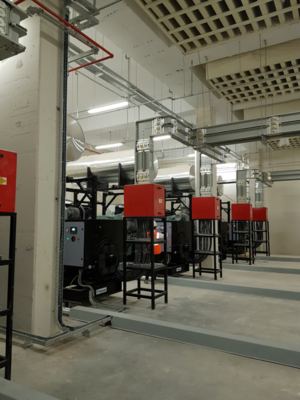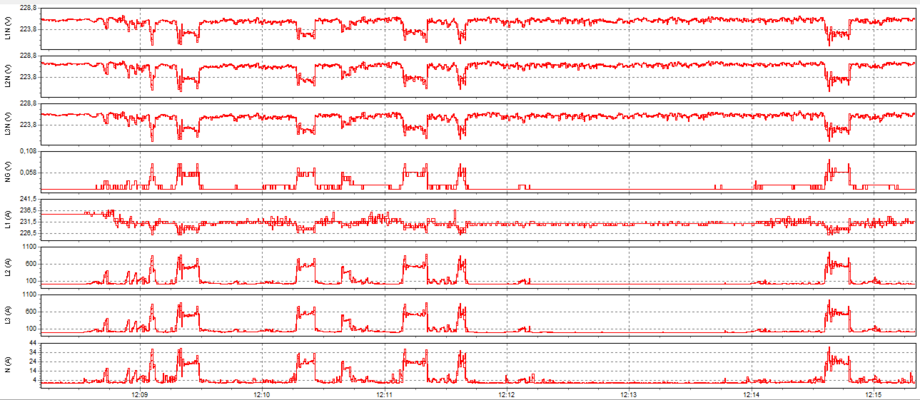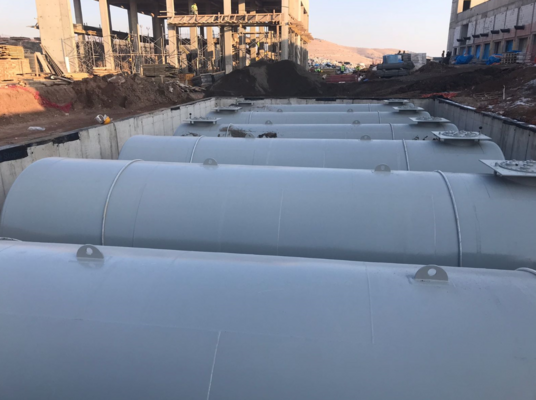Application story from Burak Yiğiter, Senior Project Engineer at Teksan.
You’ve decided to purchase a diesel generator for your facility as a back-up power source and started receiving quotes for this. How can you be confident that your choice of generator suits your business requirements?
In accordance with Article 4 of ISO 8528-7/2017 standards, the customer and the manufacturer must specify the projected full-load use of the generator. If these specifications are not specified by the customer, the manufacturers specifications will be selected by default.
From the key specifications listed in Article 4 of ISO 8528-7, we will explain below what manufacturers need most when receiving quotations for generators. For more in-depth information on the ISO specification, we recommend that you check the relevant standard directly.
Basic Data
Power demand must be included in the first step of the information submitted by the customer, and should be calculated as the sum of the loads that will work with the generator. When determining the peak power demand, potential loads that may increase in the future should be considered. During this phase, measurement can be requested from the manufacturers. Although the power factor varies according to the characteristics of the loads to be fed by the diesel generator, diesel generators are produced as power factor 0.8 as standard.
Declared frequency-voltage varies depending on the use case of the generator to be purchased, and the country in which it is used. 50-60 Hz, 400V-480V is commonly seen when the products of generator manufacturers are checked. Grounding of the system should be specified at the time of purchase, if applicable. If a special grounding (TN, TT, IT ...) is to be used in your system, it must be specified.
The characteristics of the connected electrical load are directly related to the generator performance. In the ISO specification, it is recommended that the following load characteristics are specified;
● Application information
● Load power characteristics
● Power factor of load
● Activation method (if there is an electric engine)
● Diversity factor of the load
● Intermittent load quantity
● Non-linear load amount and characteristics
● Characteristics of the network to be connected
The required steady state, transient frequency and voltage behaviours are very important to ensure that the load on the field can operate in a healthy way without any damage. During the first step load acceptance phase, voltage and frequency limits are classified as G1, G2, G3, G4 in Table 4 of TS ISO 8528-5, G2, G3, G4 in Table 4 under TS ISO 8528-5.
Let’s talk about G1, G2, G3, and G4 loads briefly. G1 can be considered as lighting and electrical load. G2 is used in lighting systems, pumps, fans, cranes, such as voltage and frequency in terms of some tolerable loads. G3 applications include telecommunication, thyristor controlled loads. They are very sensitive loads. The G4 class is the data load to be specified between the customer and the manufacturer.
Type of fuel used must be specified in the event of a special case. For the diesel fuel to be used:
● Density
● Viscosity
● Calorie value
● Cetane number
● Vanadium, sodium, silica and aluminium oxide contents
● For heavy fuels; the sulphur content must be specified.
Any diesel fuel used must comply with TS EN 590 and ASTM D 975 standards
The starting method is an important factor for activating the diesel generator. Mechanical, electrical and pneumatic start systems are the most common systems used, although they vary according to generator application. An electrical starting system is used as the preferred standard in our generator sets. Pneumatic start systems are widely used in special applications such as airports and oil fields.
Cooling and ventilation of the room where the generator is situated should be shared with the manufacturer. It is necessary to contact the manufacturers for the intake and discharge specifications and requirements for the selected generator. Operating speed is 1500 - 1800 rpm depending on the purpose and country of operation. Operating RPM must be logged and kept available in case of an audit.
The capacity required for the fuel tank should be determined by the maximum required operating time without refuelling and the estimated annual operating time of the generator. The characteristics of the fuel tank to be used (for example: under ground/above ground, single wall/double wall, inside or outside the generator chassis) must be specified according to the load condition of the generator (100%, 75%, 50%, etc.). Hourly values (8 hours, 24 hours, etc.) can be specified and are available from the manufacturer upon request.
The alternator excitation system directly affects the load characteristic of your generator set and its response time to varying loads. Excitation systems commonly used by manufacturers are; auxiliary winding, PMG, Arep.
The power rating category of the generator is another factor affecting the generator size, reflected in the price. The power rating category (such as prime, standby, continuous, DCP, LTP) must be specified according to the categories specified under ISO 8528-1.
The operating method refers to the manual or automatic synchronization between other generator sets or mains supply operation with other generators. The auxiliary equipment to be used for each situation varies, and is directly reflected in pricing.
In the configuration of the generator set, the below issues must be specified:
● Cabin, container demand
● Whether the generator set will be fixed or mobile
● Whether the environment in which the generator will operate is protected in an open environment, covered environment or unprotected in an open environment.
Ambient conditions are an important factor that must be provided in order for the purchased diesel generator to supply the desired power. The following characteristics should be given when requesting an offer.
● Ambient temperature (Min and Max)
● Altitude
● Humidity
In the event of excessive dust, sand, or chemical pollution in the environment where the generator will operate, the manufacturer must be notified.
The output power of generator sets is provided in line with ISO 8528-1 standards according to the following conditions.
● Total barometric pressure: 100 kPA
● Ambient temperature: 25°C
● Relative Humidity: 30%
Burak Yiğiter




















